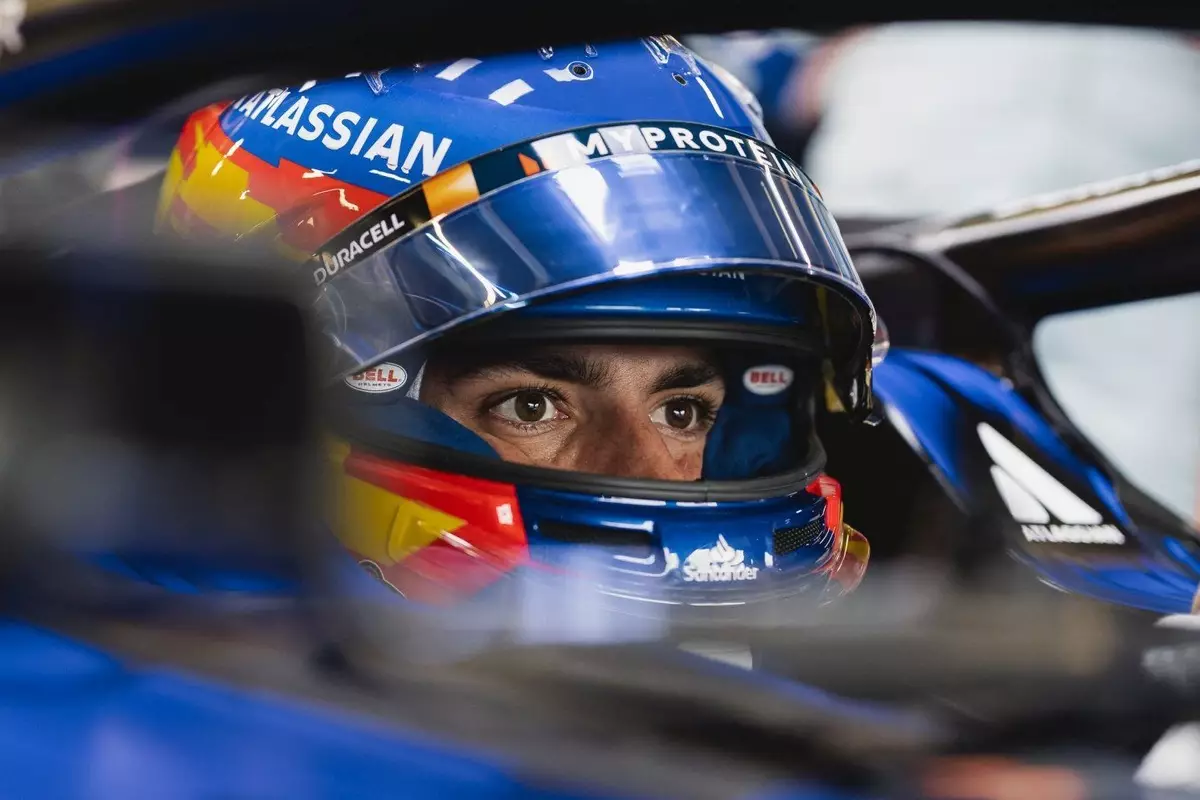The recent decision by the FIA to impose stricter penalties on swearing in Formula 1 has stirred a contentious debate not only among fans but also within the paddock itself. Williams driver Carlos Sainz has voiced his concerns about these new guidelines, asserting that the proposed restrictions compromise an essential aspect of the sport — the emotional authenticity of the drivers. The new regulations, which extend to fines reaching up to €120,000 and potential race bans, mark a significant shift in how driver conduct is monitored.
As the governing body of motorsports, the FIA has a responsibility to maintain the sport’s integrity; however, by implementing these stringent measures, the line between professionalism and emotional expression may become blurred. Sainz highlighted a critical point: the spontaneity and authenticity of drivers’ emotions during a race should not be stifled. The high-pressure environment of an F1 race often leads to heated moments where emotions surface. Penalizing drivers for their momentary slips of frustration or excitement could distance the sport from its fans, who appreciate the raw emotion that accompanies competitive racing.
Sainz’s remarks resonate particularly well in the context of how other motorsport categories, such as the World Rally Championship (WRC), have handled similar situations. The case of WRC driver Adrien Fourmaux, who faced fines for using “inappropriate language,” sets a precedent that could have implications for Formula 1. While inappropriate comments directed at individuals merit regulation, context is crucial. Sainz argues that emotional outbursts during race radio communications reveal genuine human reactions that fans connect with on a personal level.
Moreover, the extreme intensity of F1 races — characterized by high speeds, profound technical challenges, and often, nail-biting tactics — naturally elicits passionate responses from drivers. The sport thrives on these moments. While Sainz advocates for civility during official media appearances, he rightly questions whether an overly stringent approach to radio communications could ultimately hinder fans’ understanding and appreciation of what drivers endure mentally and emotionally on the circuit.
Interestingly, Sainz emphasizes the importance of maintaining professionalism in the public sphere while advocating for a nuanced approach to communications within the car. His comments reflect an acute understanding of the duality faced by athletes today: the demand for professionalism in public engagements juxtaposed against the unfiltered adrenaline-fueled reactions that define their roles as competitors.
The notion of “good behavior” during press conferences and media interactions brings to light another facet of this conversation. Athletes, particularly in high-pressure sports like Formula 1, are often scrutinized not only for their performance but also for their comportment off the track. Upholding a standard of decorum is vital, especially for the sport’s image and its influence on younger fans. However, imposing restrictions on verbal conduct during critical moments of competition poses the risk of sanitizing the sport, which could lead to a disconnection from its roots.
As discussions about modernizing F1 attendance and live broadcasts of team radio communications continue, with FIA President Mohammed Ben Sulayem hinting at a potential halt on live audio feeds, the stakes climb higher. The balance that needs to be struck is delicate; champions of the sport not only entertain with speed and skill but also with their authentic, passionate exchanges that resonate with the audience. Sainz aptly points out that the allure of Formula 1 is deeply intertwined with the unfiltered interactions that provide insight into the highs and lows of racing life.
Carlos Sainz’s advocacy for maintaining certain freedoms in how drivers express themselves within the car shines a light on an often-overlooked aspect of motorsport: the emotional journey of the athletes involved. While the FIA’s initiative might stem from a desire to foster a more professional environment, it is equally vital to ensure that the sport retains its heart and soul — characteristics that make it thrilling for fans and participants alike. The future of Formula 1 hinges not only on technology and speed but also on preserving the raw human emotions that drive this electrifying sport.

